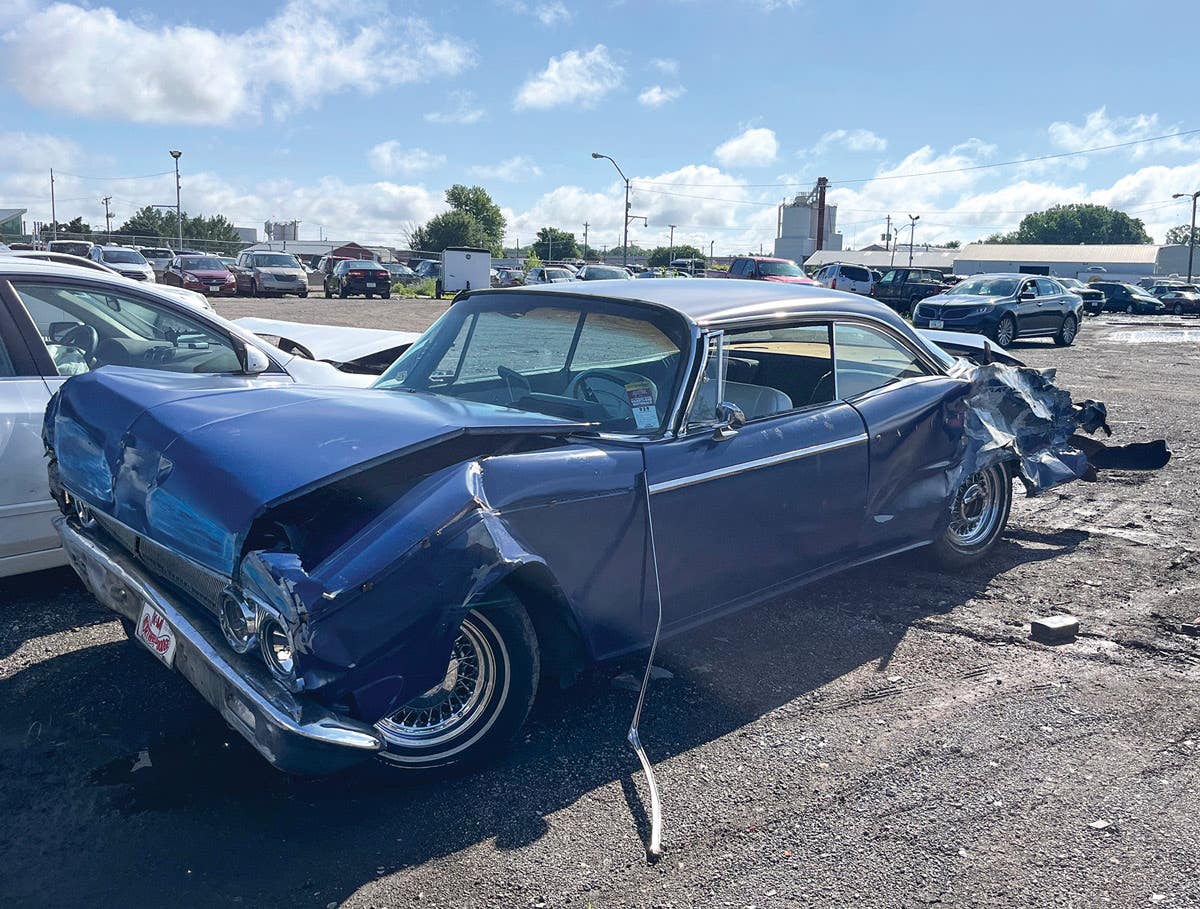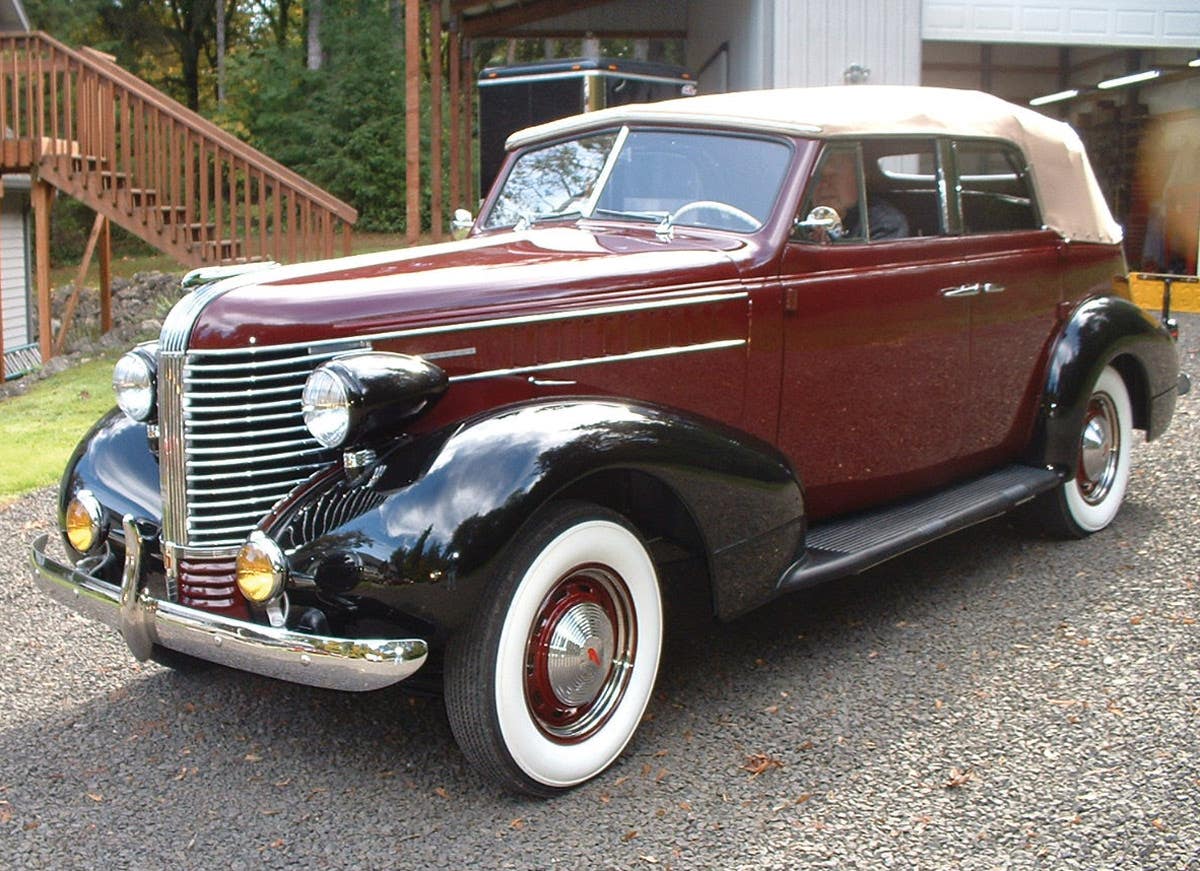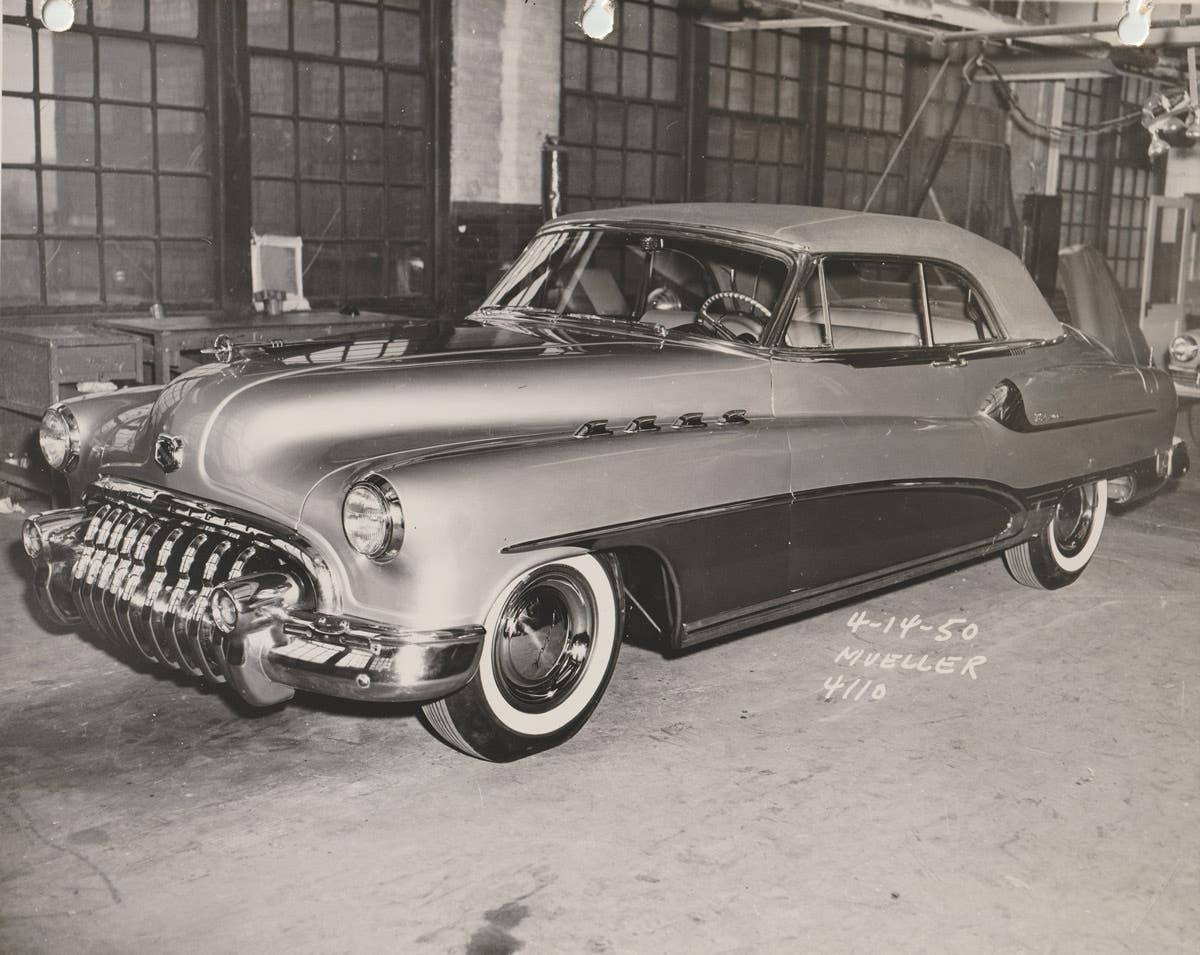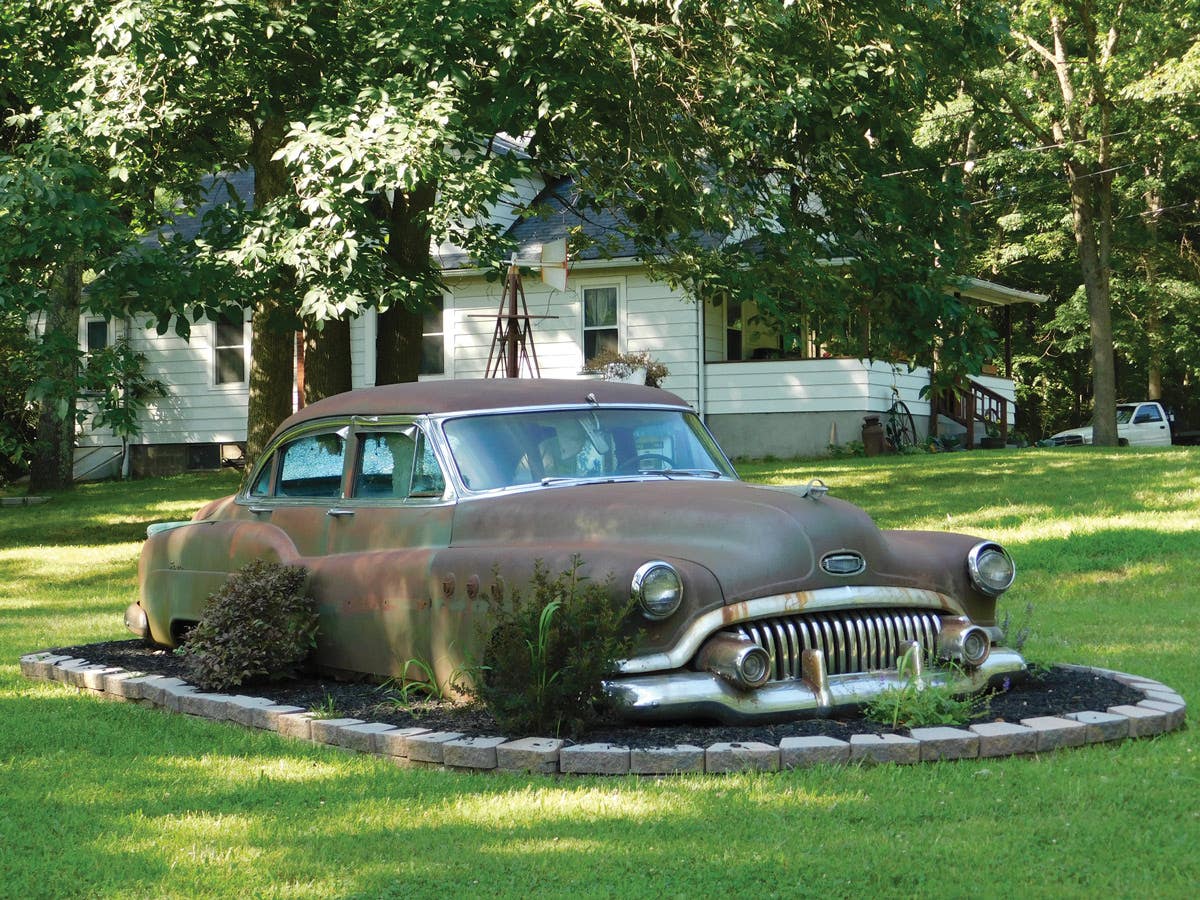By Brian Earnest
As a lover of wonderful old automobiles, Debbie Hull finds herself suspended in a strange and perplexing place.
She owns a Tucker ’48 sedan, which immediately puts her in a very small fraternity (and an even smaller sorority). And with such a position comes a whole laundry list of difficulties, dilemmas and opportunities.
There are only 47 of those famous cars left in the world, of course, and Hull isn’t certain, but she thinks she is the only woman who has sole ownership of one. And she loves her car. It reminds her of her late father, Mel Hull, who was a passionate car buff and collector. He originally bought the car way back in 1959 and owned it for more than three decades before he eventually handed the keys and title over to Debbie, one of his three daughters, in 1988.
The car is her pride and joy. It has been in her family for as long as she can remember, and it’s hard for her to even imagine not being “the lady with the Tucker.”
But, as they say, every rose has a thorn. When you own such a car, you get to worry and obsess about things that other car owners don’t. Where should you keep it? How much should you run it? How much do you insure it for? Should it be on public display, or on the road, doing what a car was supposed to do?
And maybe the biggest question of all: It might be a family heirloom, but a Tucker is worth a lot of money and a lot of other people would like to own it – should I consider selling it?
Hull, a resident of Concord, Calif., wrestles with many of those questions every day.
“I don’t think there are any others owned solely by a woman, so there is some notoriety there,” laughed Hull. “It gives you some bragging rights.
“And I think, ‘Gosh, if I sold it, then I wouldn’t be a Tucker owner anymore!’”
3468 Mel Hull painted his Tucker more than 30 years ago. The car was originally
black, but wears Waltz Blue paint today.
So far, Hull has held off on making any rash decisions and has instead put the car on display in the San Diego Auto Museum. There, the car gets regular care, Hull doesn’t have to worry about storing it and keeping it secure, and the car is available for public enjoyment.
“It’s probably going on seven years there, I think,” she said. “It’s nice not having to worry about it. Rust never sleeps!
“It’s funny, every now and then a friend of mine wants to go see it … and I’ll tell [the museum] to give them ‘behind the rope’ privileges. But I do miss it. It’s not like it used to be. I had so much fun with the car. My sister and I drove it all over Northern California when the [Tucker] movie came out, and that car never let me down. When I go down to the museum, I hate to see it just sitting, but at least people get to see it, and the museum just loves it.
“And now, the worth of the car is kind of scary.”
The upholstery in Tucker No. 1019 was re-done many years ago, but the dash,
instruments, steering wheel and other equipment inside are all original.
Indeed, prices have soared in recent years when a Tucker changes hands. Twice the cars have topped the $1 million mark at auction – Tucker No. 1038 went for $1,017,500 in 2008 at the RM Monterey event, and two years later No. 1045 sold for $1,1275,000 at the same venue. Another car, No. 1041, brought $750,000 at auction in 2009.
Tucker No. 1010, a mostly original car with only about 10,000 miles, is scheduled to cross the block at Gooding & Company’s 2011 Scottsdale Auction Jan. 22. It will no doubt draw plenty of interest and spirited bidding as well.
“A lot of Tucker owners are going to be real interested to see what the prices do in the next year or so,” Hull admitted.
Note the round foot pedals (above) and unique torpedo-shaped hood ornament (below).
Making a killing on an auction was probably the furthest thing on Mel Hull’s mind one day back in 1959, however. “He was out driving and he went by a repair shop and saw the pipes sticking out of the back of the car in front of the shop,” Debbie recalled. “He knew about Tuckers because he was a car guy. He knew right away what the car was.
“So he turned around and went into the shop and started asking about the car — the car was apparently having some transmission problems. Well, the car had belonged to a guy from Wallawallah, Wash., and [Dad] ended up giving the guy an airplane ticket home and $1,250. I think Dad drove the car home in second gear, and that’s where it all started… He was a car guy and as the years went by, he had a collection of maybe 30 different orphan cars … He sold a lot of them when his health started to fail, but we wouldn’t let him sell the Tucker.”
Mel’s car was Tucker No. 1019 — only the second Tucker originally painted black. The car eventually became the centerpiece of Hull’s eclectic collection and was generally reserved for special occasions and joyrides near the family’s Pasadena home. “Like Easter,” Debbie noted. “He always took us out for a ride on Easter. For the longest period, he was so busy that he didn’t get it out much. Then when he retired, he was able to take it to Apple Valley and put it in parades and things. Then his health started to fail and he didn’t get to drive it much.”
Sometime around 1980, Debbie figures, Mel painted the car himself, giving it its current coat of Waltz Blue. He also had the interior upholstery re-done. “He did paint it once — outside at night,” Debbie said. “And he did the interior, but the car was never taken down to a frame-off restoration. It’s one of the few Tuckers that haven’t been restored like that, and that, I suspect, has some value. The nuts and bolts on it are all from the factory.”
Then, in 1987, the Hulls’ Tucker got to take a star turn when it joined a couple dozen other ’48 sedans in the filming of “Tucker: The Man and His Dream.” The car made it into several scenes in the movie, with Mel driving and Debbie riding shotgun.
“They used a bunch of the cars in the scene of them driving around the courthouse, and then the scene when they did the parade in Oakland down Grand Street … They used the Opera House over in San Francisco. In the movie, in the car where you can see two people — that’s us.
“They made those 26 cars look like 50. They had some mocked-up Studebakers, and also had cardboard cutouts they’d put at the end of the line of cars. It was a very fun experience.”
The movie also marked the only time in the past 42 years that No. 1019 almost changed hands. “Well, before the movie, a lot of the Tucker owners were getting letters [from Paramount Pictures] asking if they were interested in selling their cars,” Hull said. “I think they were offering between $60,000 and $80,000. Dad did get an offer, but that’s when the family said, ‘No, no, no, you can’t do that!’”
High times for the Hulls and their Tucker ensued after the movie debuted in 1988. “Dad and I drove to the movie together, and right afterward is when he gave the car to me,” Debbie said. “Then my sister and I had a blast going all over, to all the stores and premiers and everything.
“The car has about 109,000 miles on it — most of them have over 100,000 — and I probably put at least 5,000 on in those first couple years. I loved to drive it.”
And even when she wasn’t driving it, Hull always had a topic of conversation she could pull out at anytime — even during tough times during work as a critical care nurse. “If I was working on an older gentleman and wanted something to talk about, I could start by saying ‘Do you know what a Tucker is?’ I’d always get them talking about cars like that.”
The Tucker ’48 has always had tongues wagging, even before the first of the 50 sedans and single prototype ever became a reality. They were the brainchild of entrepreneur and auto visionary Preston Tucker, who battled long odds, the car-building establishment, the Securities and Exchange Commission and, some say, the forces of evil, just long enough to produce 51 cars that were unlike anything the U.S. car market had ever seen.
There was no mistaking a Tucker radio. Its vertical buttons spelling out the
car’s name were a dead giveaway.
The stunning sedans were packed with new ideas and fresh technology, from their directional third headlamps (“Cyclops”) to their rear-mounted engines to their perimeter frames and pop-out, safety-inspired windshields. Almost everything about the cars was different: their proprietary variable automatic transmission; the Franklin air-cooled “pancake six” engine that displaced 335 cubic inches and produced 166 hp; and the troublesome “rubber sandwich” suspension.
The Tuckers featured a sleek, sloping design that came from the pen of designer Alex Tremulis, who gave the cars a long, sloping “fastback” back end, curvy fenders, prominent tail lamps, and distinct horizontal grille work on the front and back.
The cars ultimately became more famous for their short production run and Preston Tucker’s famous battles to keep his dream alive than they did for their actual success as transportation. More than anything, the star-crossed Tuckers are noteworthy for their rarity — only 47 of the original 51 built in Tucker’s huge Chicago factory remain.
The flat six engines were also clearly branded. The original engine in Tucker
No. 1019 has carried the car through 109,000 miles. It’s a 166-hp, 335-cid
flathead six.
Hull figures she is approaching a crossroads with her car, as painful as it is to admit. After sitting for so long in the museum, the car will need a bit of work if she wants to drive it again. “I bet if I went down and put clean gas in it, it would start up,” she said. “But I’m sure it needs brakes now. It was painted over 30 years ago. The interior was done over 30 years ago. The engine, I have faith in it, but it has sat for a while. But everything is there, and I would consider it a rust-free car, and that’s a big thing.
“After the hoopla of the movie, the dilemma was I just didn’t have a climate-controlled area to keep the car in. I had a metal garage, basically. I wanted to be able to rest when it rained, you know? I just didn’t want it sitting in there like that … It was a dilemma.
“I really don’t have the money to refurbish and restore it to what it should be … but there are people out there that do, and that have the love for the car, too. The people that are restoring them now are restoring them to 100-point cars … There are just a handful of people that really have the ability to restore it and have the knowledge that is needed. There are a handful of people that could do it justice.”
Hull giggles when she recalls a quote that Mel Hull occasionally spouted off. “My dad used to tell me, ‘If anybody ever offers you a million dollars for the car, you take it!’
“At the time, I’m sure he was saying that tongue-in-cheek,” Hull said. “If I had $100,000 or $200,000 to restore it, things would be different. Until then, I’m going to keep it the way it is and wait and see what happens.”
More Resources For Car Collectors:
- Classic car price guides, research, books, back issues of Old Cars Weekly & more
- Get expert restoration advice for your classic car
- Get car pricing, data and history all in one place
- Sign up for Old Cars Weekly's FREE email newsletter
- Need to buy or sell your classic car? Looking for parts or memorabilia? Search our huge online classified marketplace







